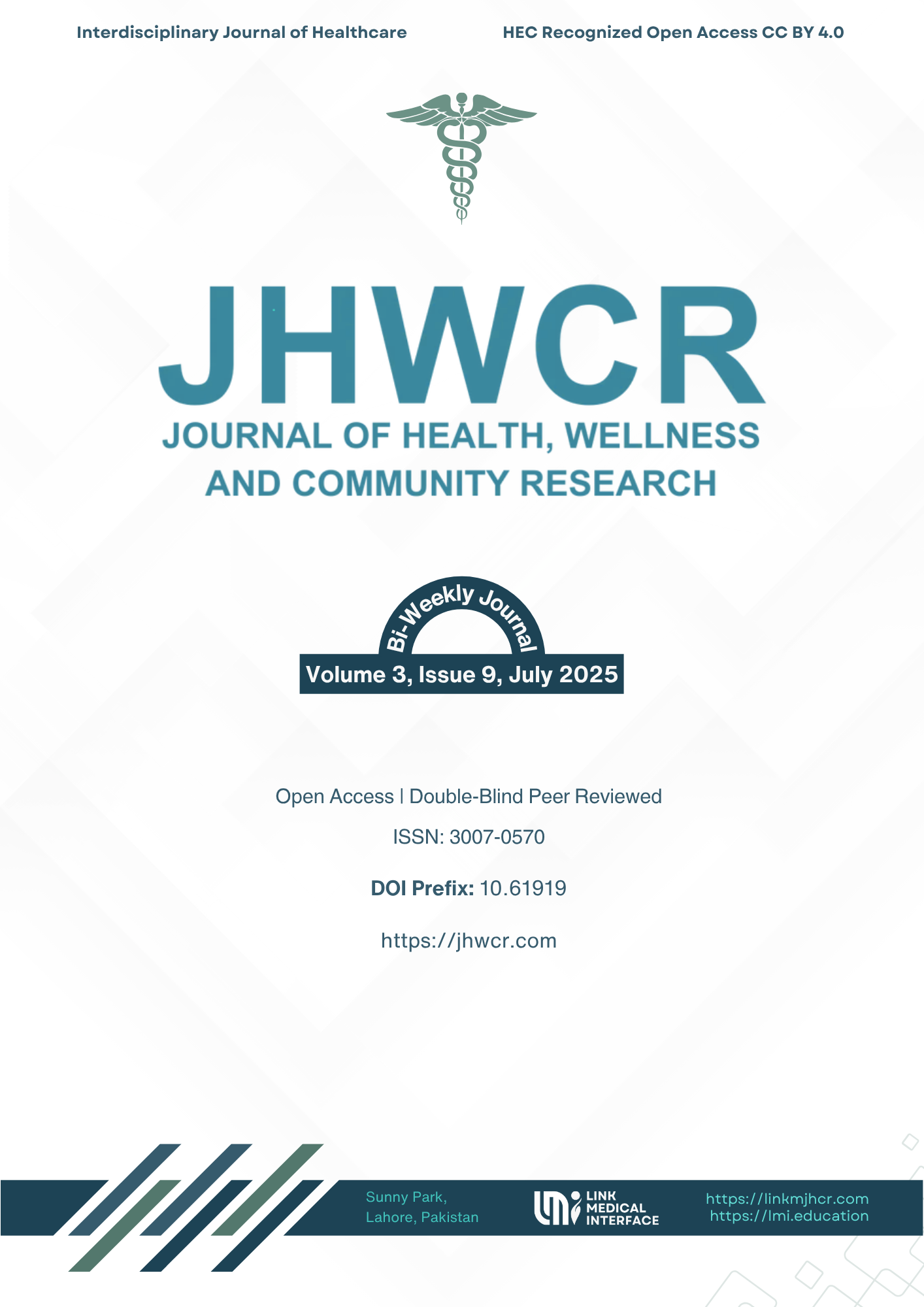Diagnostic Accuracy of the Respiratory Index of Severity in Children (RISC) Score for Mortality Prediction and Severity Assessment in Community-Acquired Pneumonia Among 1–5-Year-Olds
DOI:
https://doi.org/10.61919/9b8q7q90Keywords:
community-acquired pneumonia, RISC score, children, diagnostic accuracy, severity assessment, mortality prediction.Abstract
Background: Community-acquired pneumonia (CAP) is a major cause of morbidity and mortality in children under five years, particularly in resource-limited settings. The absence of simple, validated tools for early severity assessment contributes to variable management and outcomes. The Respiratory Index of Severity in Children (RISC) score, incorporating readily available clinical parameters, has shown promise for predicting mortality and guiding treatment decisions. Objective: To evaluate the diagnostic accuracy of the RISC score in predicting mortality and determining severity of CAP in children aged 1–5 years in a tertiary care setting. Methods: This prospective observational study enrolled 170 children with radiologically confirmed CAP admitted to the pediatric intensive care unit at a tertiary hospital from January to December 2024. Demographic, clinical, and laboratory data were recorded at admission, and RISC scores were calculated within 24 hours. Outcomes were classified as survival or mortality, and diagnostic performance metrics including sensitivity, specificity, positive predictive value (PPV), negative predictive value (NPV), and area under the ROC curve (AUC) were calculated with 95% confidence intervals. Results: Of 170 patients, 28 (16.5%) did not survive. Median RISC scores were significantly higher in non-survivors compared to survivors (5.00 vs. 2.00, p < 0.001). The RISC score demonstrated a sensitivity of 82.1% (95% CI 63.1–93.9%), specificity of 97.9% (95% CI 93.8–99.6%), PPV of 88.5%, NPV of 96.5%, and overall diagnostic accuracy of 97.3%. ROC analysis identified an optimal cut-off value of >3 with AUC 0.870, yielding sensitivity of 71.4% and specificity of 94.4%. Conclusion: The RISC score is a highly specific and accurate tool for predicting mortality and assessing disease severity in pediatric CAP. Adoption into early triage protocols may improve timely management and resource allocation in high-burden settings.
Downloads
Published
Data Availability Statement
provided
Issue
Section
License
Copyright (c) 2025 Qazal Arslan, Zeeshan Qayyum, Umme Sarhad Khan Yousafzai, Muhammad Shahzad Alamgeer, Sumbal Malik, Haider Ali Awan (Author)

This work is licensed under a Creative Commons Attribution 4.0 International License.


